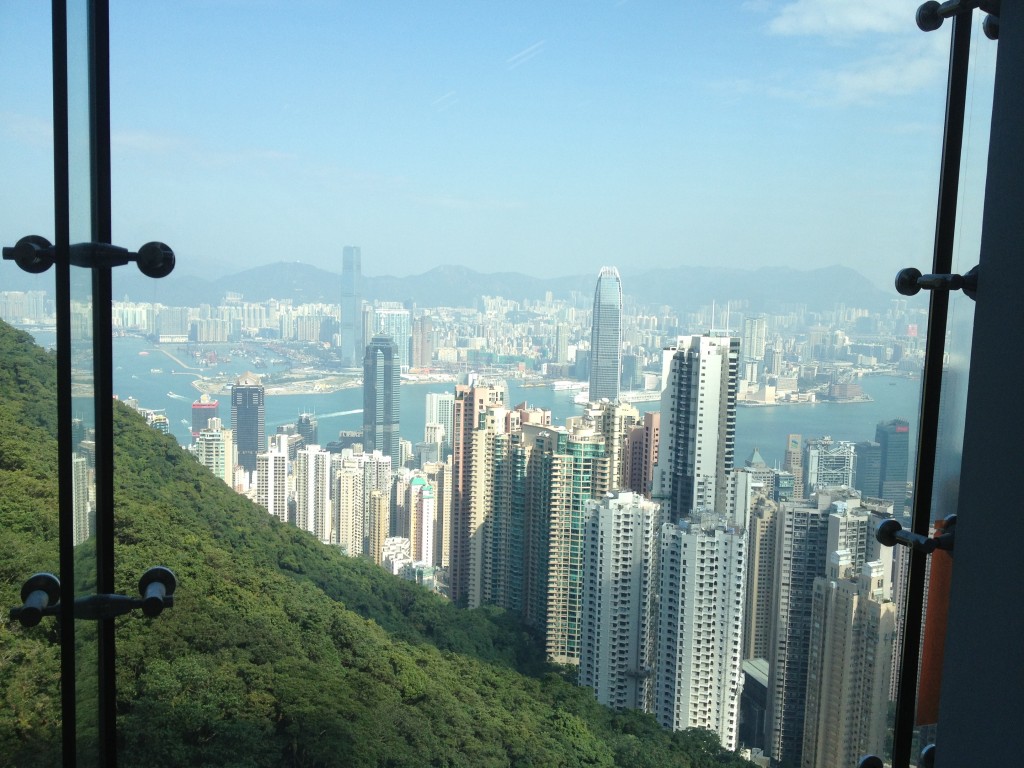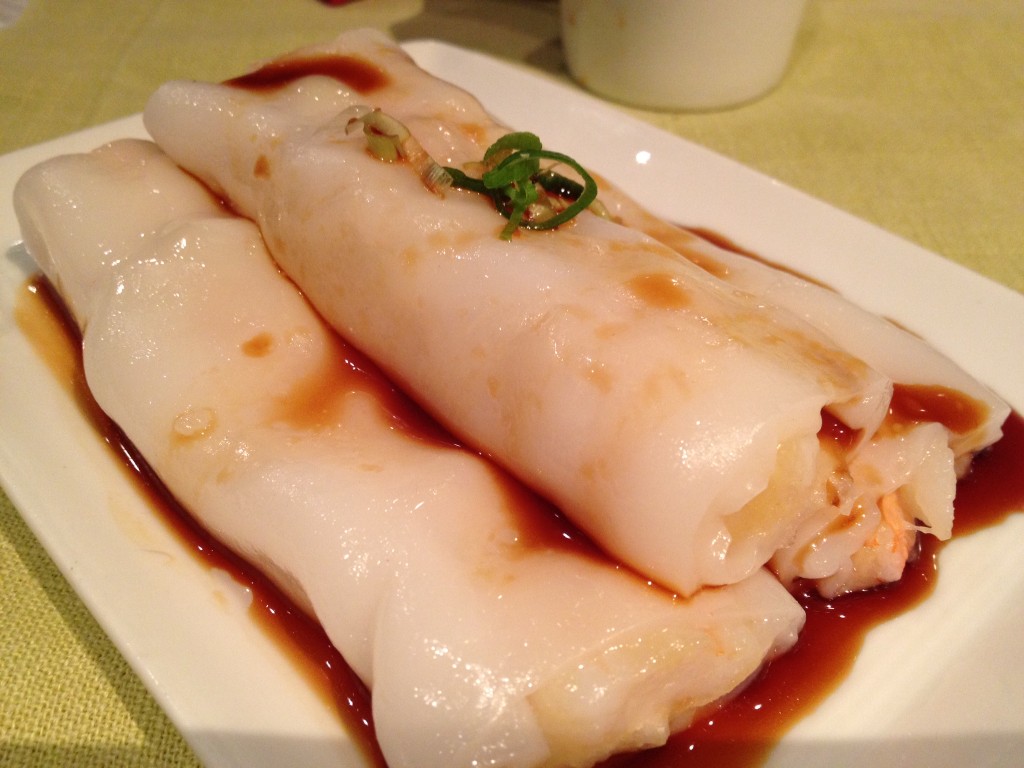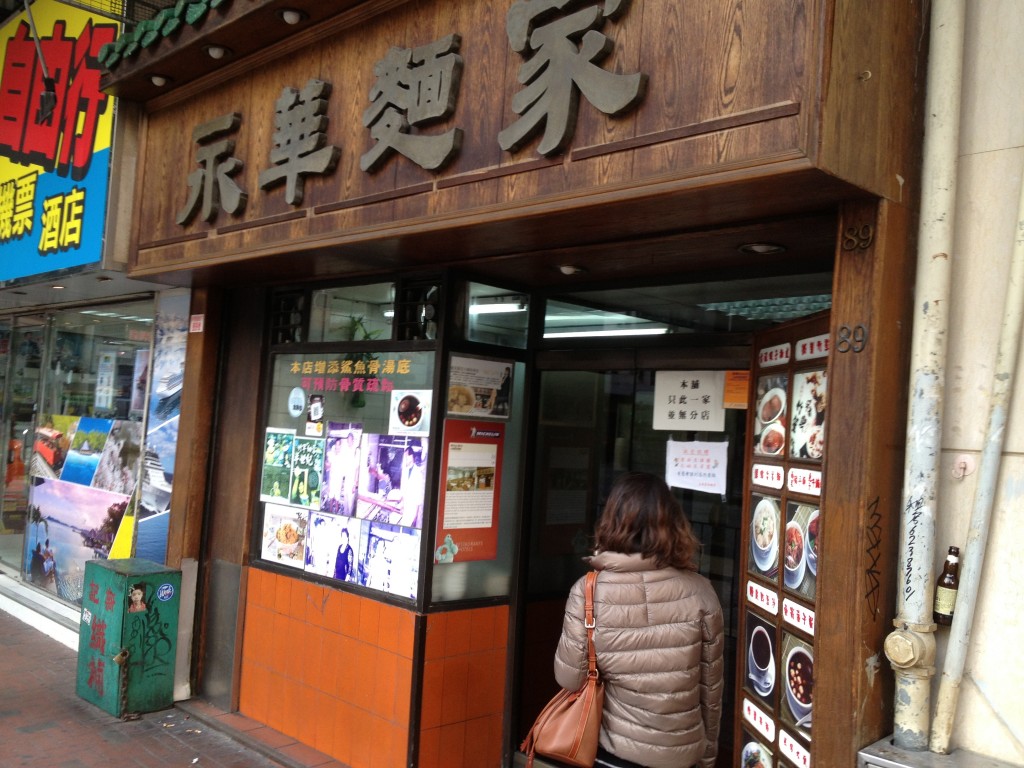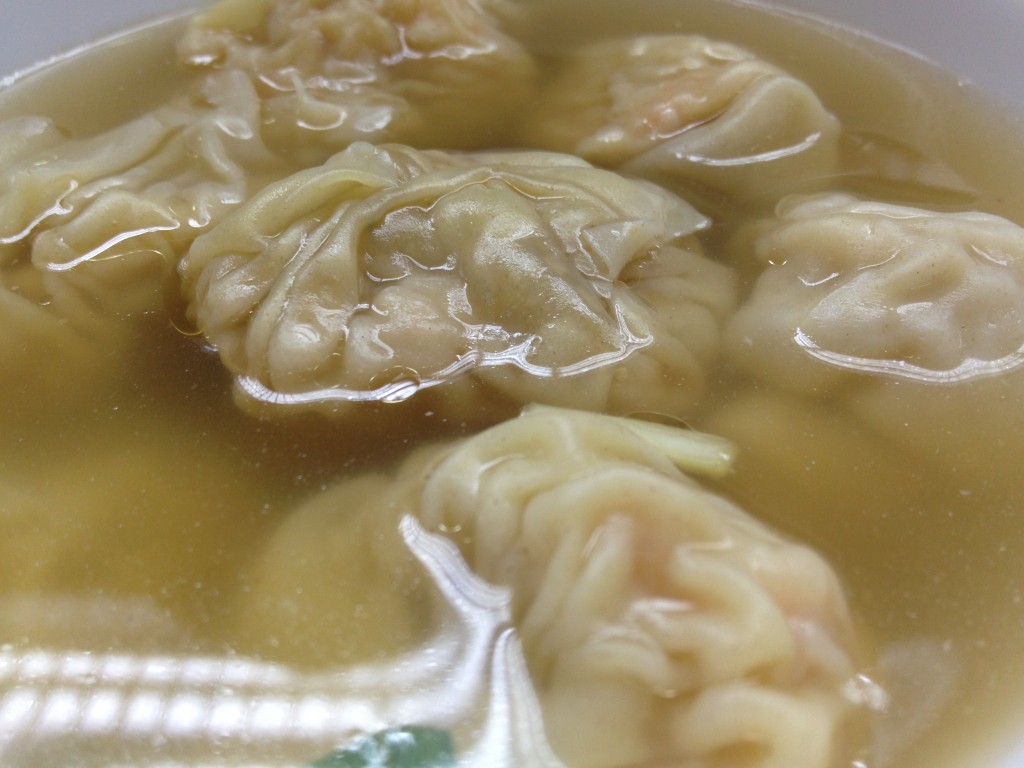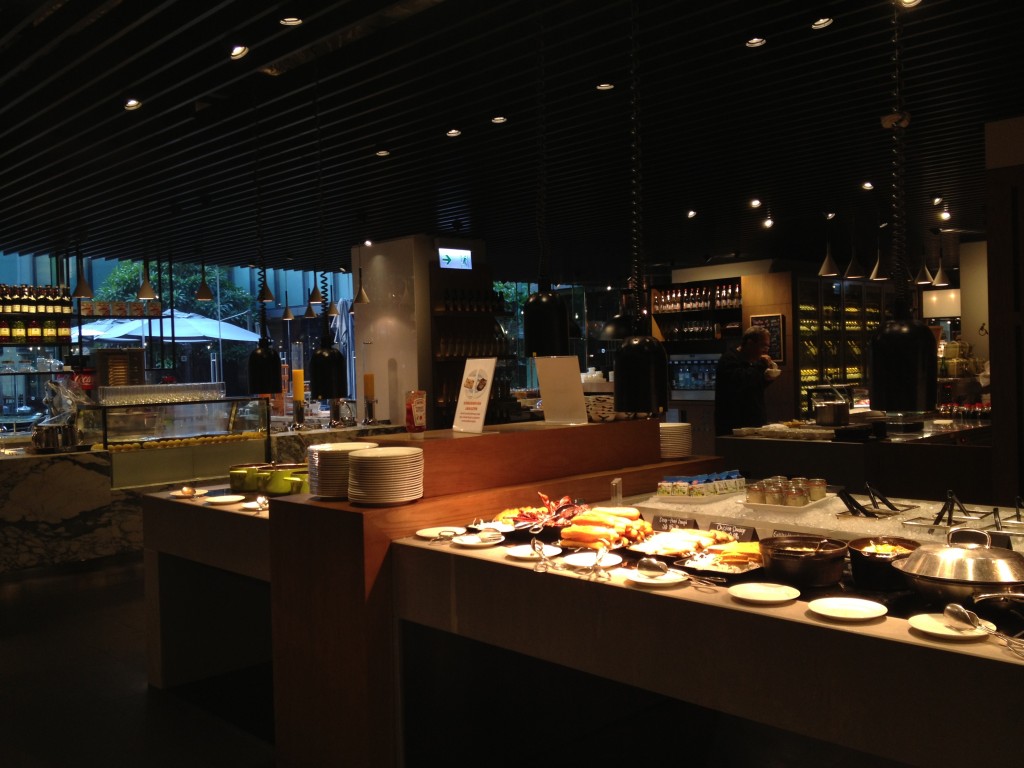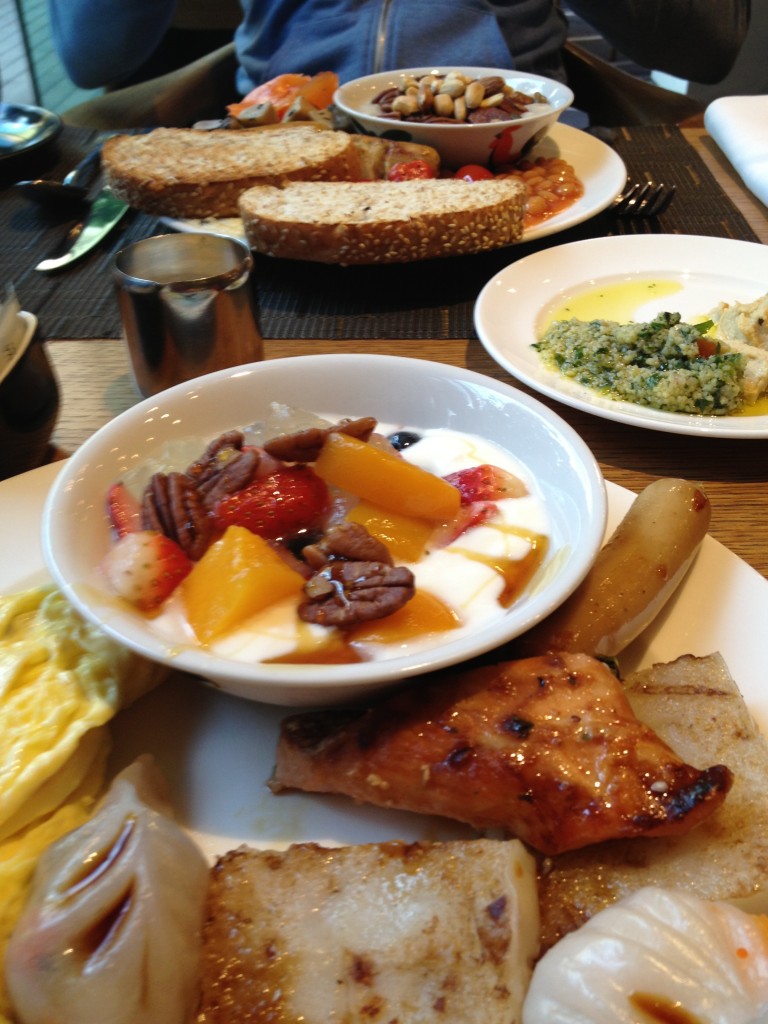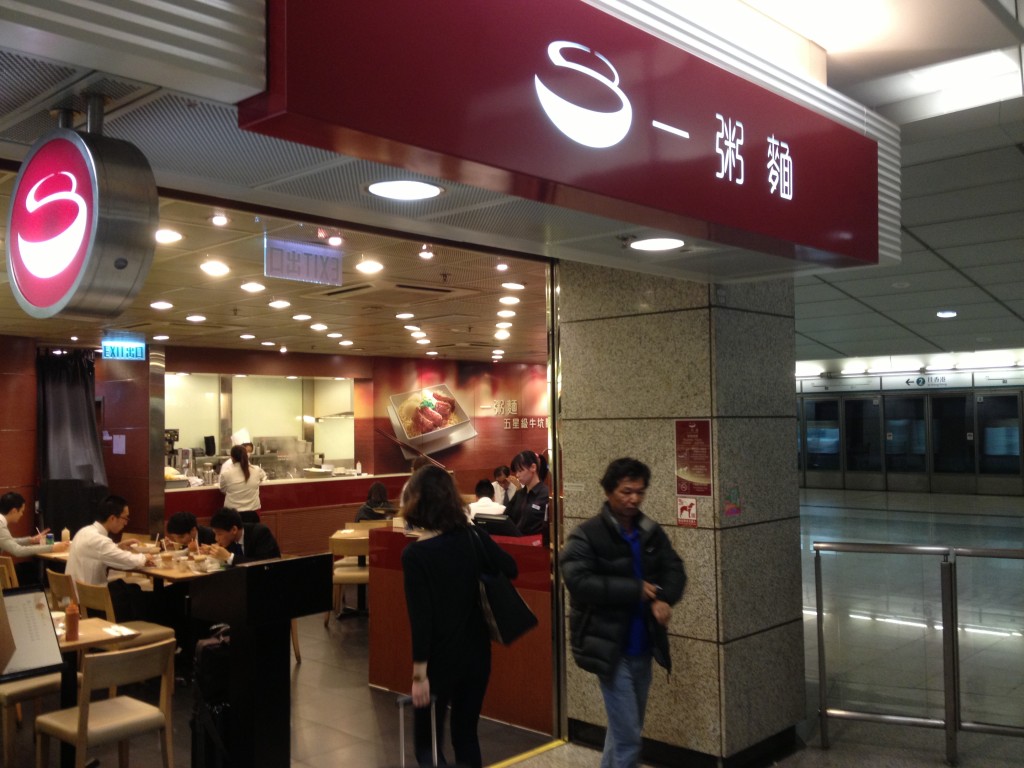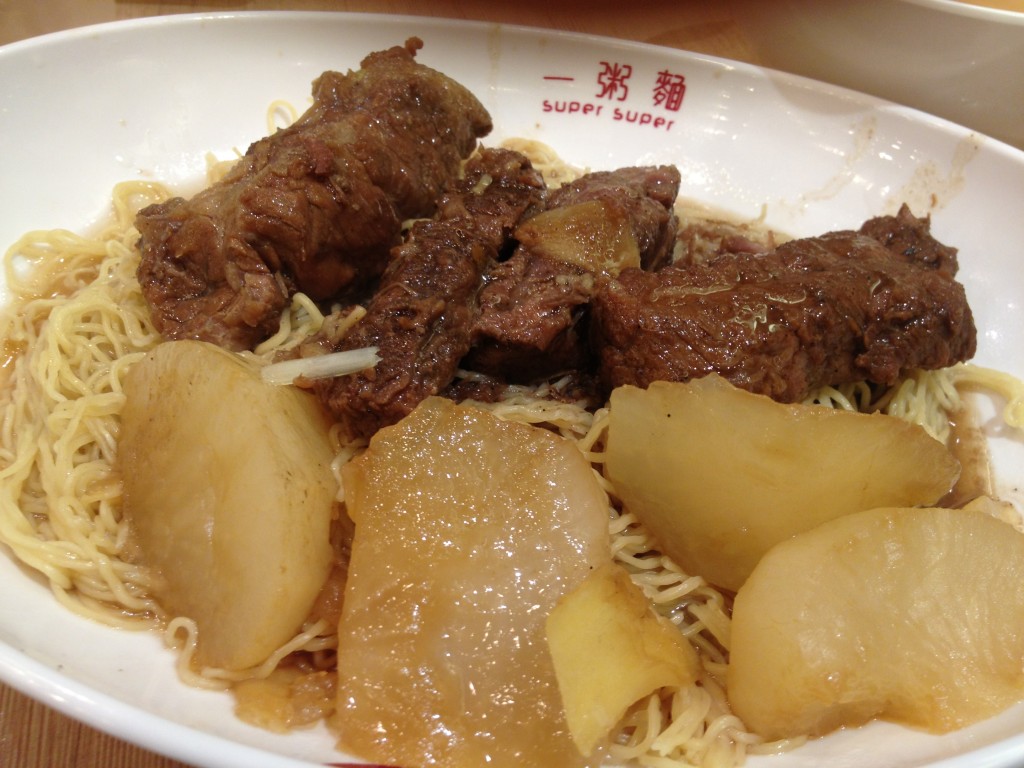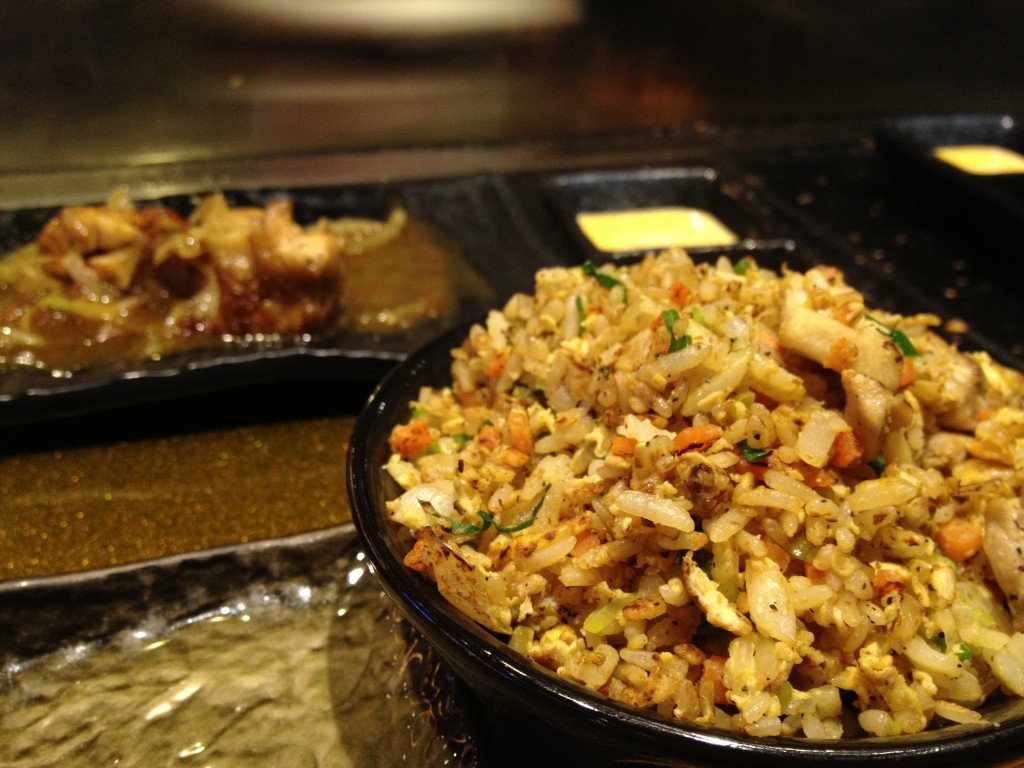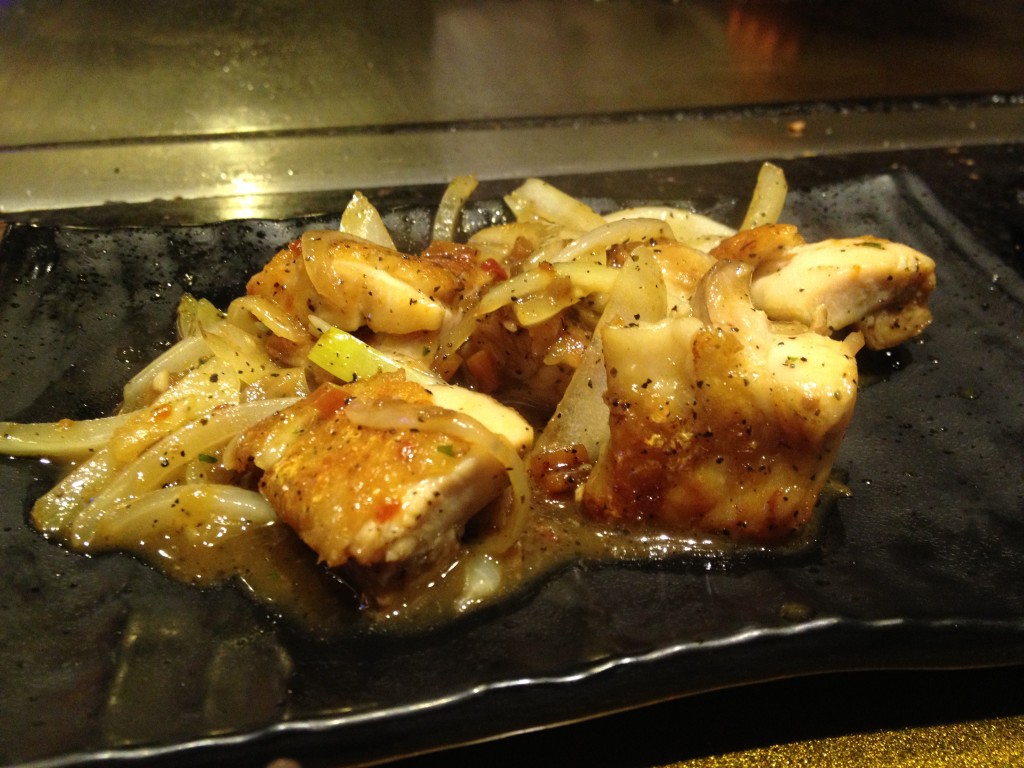Smart Asia Getaways
Discover Asia, the smart way
Three Hong Kong Restaurants Worth Your Plane Ticket (and three more you’ll enjoy once you’re there)
As I write this, I’m sitting in Brooklyn, where it’s 12 degrees Farenheit. In Hong Kong, where it’s 11:30pm, it’s 61.
Which does more than hint at the therapy one can experience simply as a result of visiting a small corner of southwest China during the winter months. But you could also go to Barbados. This article series attempts to tip the balance further toward jumping into Asia’s most inviting city by enticing you with “add ons”. The sights and sounds, and pleasurable discontinuity of being in a place so far away in both geography and history are part of it. But I won’t lie. Mainly, I’m in it for the food. If you’ve read my Taiwan food articles, you’re familiar with the uniqueness of the food culture in this region of the world (and visits to Hong Kong and Taiwan – even if you spent far more time than I have – are barely scratching the surface of a neighborhood that includes Malaysia, Singapore, Thailand, Cambodia, and Indonesia). Hong Kong’s unique contribution is a high density of culinary delights in a small geographic space. If Anthony Bourdain is to be believed, it’s not even so much about finding the “exact right spot” in HK so much as it’s about dropping in anywhere, and true to that spirit, we review Michelin-starred international sensations and train-station refueling spots in a single article.
The sights and sounds, and pleasurable discontinuity of being in a place so far away in both geography and history are part of it. But I won’t lie. Mainly, I’m in it for the food.
Is this to be the definitive article – the “be-all-end-all” on Hong Kong food? Of course not. Perish the thought that one travel blogger from New York can in the course of a couple visits begin to wrap his head around even the most surface level abundance Hong Kong food offers. (In my domestic blog, I’m continuing to discover and review new spots in New York, after nearly a decade here.) But what I hopefully have done is aggregate-through-research some suggestions of some of my most respected food authorities, and “field test” them – then added a couple of discoveries of my own. By following this article, you should eat well in Hong Kong.
1. Hoi King Heen
70 Mody Rd, Hong Kong
(Basement 2 of the Hotel Intercontinental)
+852 2731 2883
Tsim Sha Tsui (Jianshazui) East Station on Red Line, Exit P1 or P2.
We start old school, and high-end. In the West, Hong Kong is famous primarily for two things: beef/wonton soup, and the fare Hoi King Heen offers, dim sum. (點心 - “dian xin”, in Mandarin, meaning “little heart”.) Chih-Yu and I are big fans of dim sum back home, where we routinely make pilgrimages to Flushing, and even as far away as San Francisco, in search of the best. With high standards and open (small) hearts we consulted the opinions of international travel guides and local food bloggers alike in search of a good “jumping off point” in Hong Kong, and decided on Hoi over its more-famous cousin, Lin Heung Tea House, featured in an early episode of No Reservations, not least because two of the three things Lin Heung is most famous for are noisiness and…shall we say “humble”…environs. (Hoi also narrowly edged out the Tea House among local reviewers on sites like Open Rice – Hong Kong’s less-candid equivalent to Yelp – a factor that carried some weight for us.)
So, you’re wondering in unison, underscoring the very purpose of this blog, how was the food?
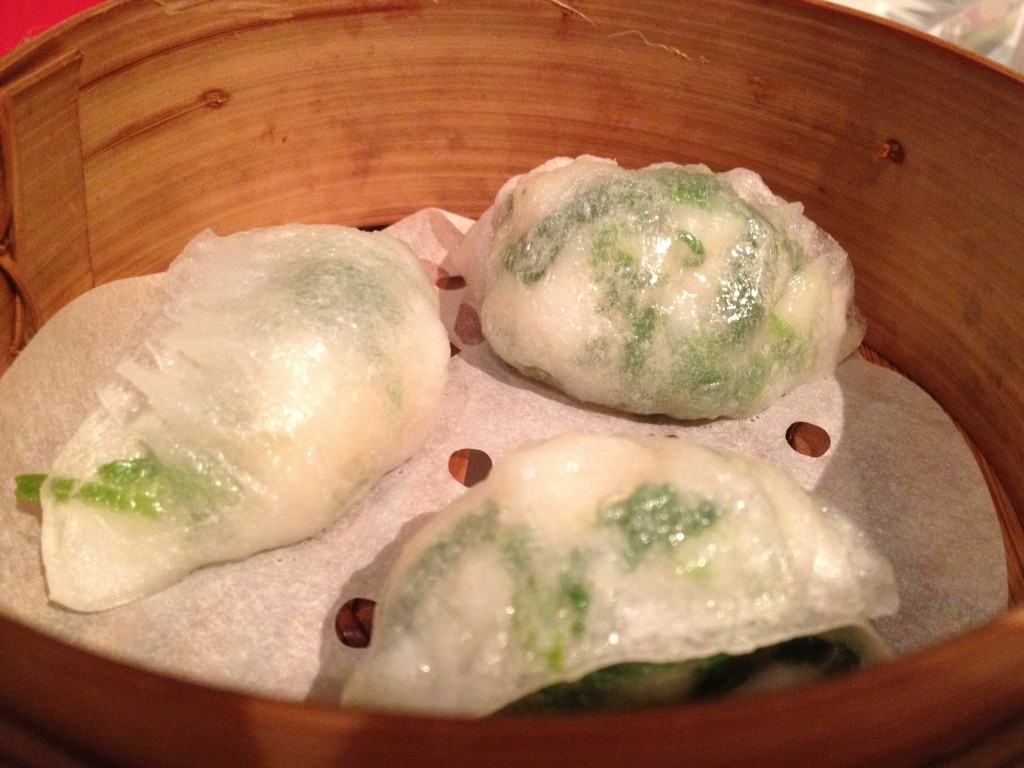 Well I won’t leave you hanging. It was excellent. Highly recommended, hence its inclusion in this article. (In Pole Position, no less.) How did it compare to our previous champion, Hong Kong Lounge in San Francisco? Well, it was just as good, and it was different. When the standard-bearer, the dish against which others are judged, the vanilla ice cream of dim sum, shrimp crepes arrived, I dug in with aplomb. And finished with an impression that surprised me: “subtlety”.
Well I won’t leave you hanging. It was excellent. Highly recommended, hence its inclusion in this article. (In Pole Position, no less.) How did it compare to our previous champion, Hong Kong Lounge in San Francisco? Well, it was just as good, and it was different. When the standard-bearer, the dish against which others are judged, the vanilla ice cream of dim sum, shrimp crepes arrived, I dug in with aplomb. And finished with an impression that surprised me: “subtlety”.
Across the board, dishes here were light on seasoning, letting the ingredients, and texture, speak for themselves. Shrimp dumplings with leek. Shrimp dumplings with only shrimp.
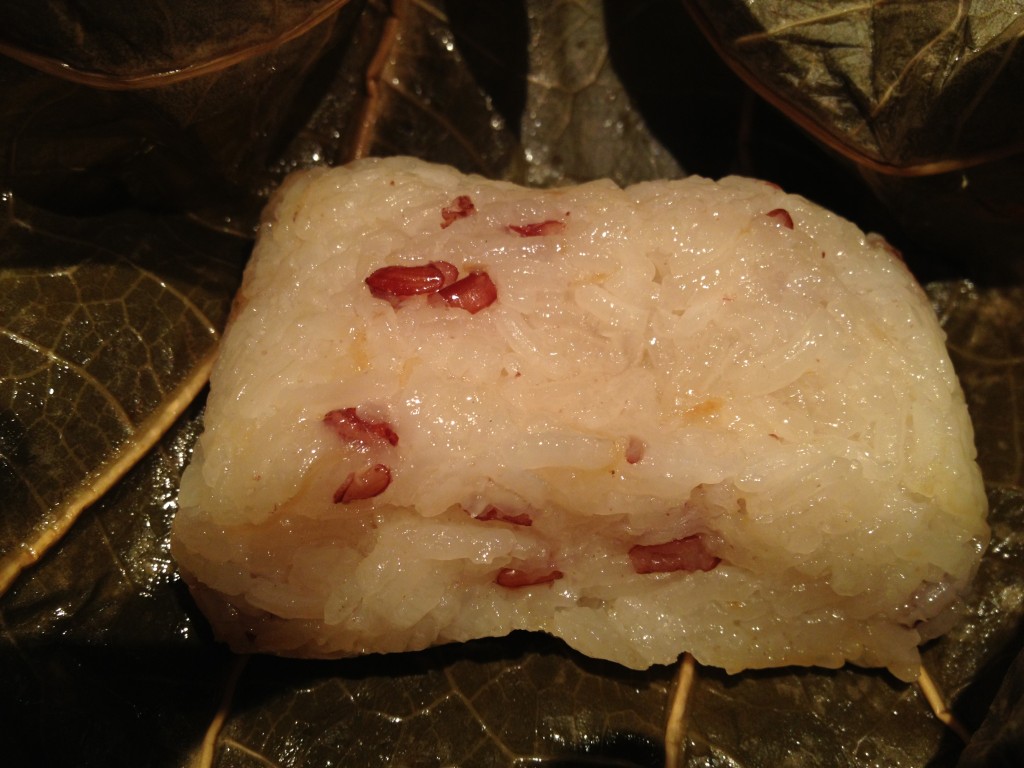 (Noticing a theme?) Steamed sticky rice in banana leaf. This was food with confidence. Dim sum, like its Shanghai cousin, shaolongbao (see below) earns its rent on texture, temperature, and balance. Is the skin the right texture? Thickness? Mouth feel? Nail those elements, use the freshest ingredients, seasoned subtlely, and like the soft-spoken power-lifter, you don’t have anything else to prove.
(Noticing a theme?) Steamed sticky rice in banana leaf. This was food with confidence. Dim sum, like its Shanghai cousin, shaolongbao (see below) earns its rent on texture, temperature, and balance. Is the skin the right texture? Thickness? Mouth feel? Nail those elements, use the freshest ingredients, seasoned subtlely, and like the soft-spoken power-lifter, you don’t have anything else to prove.
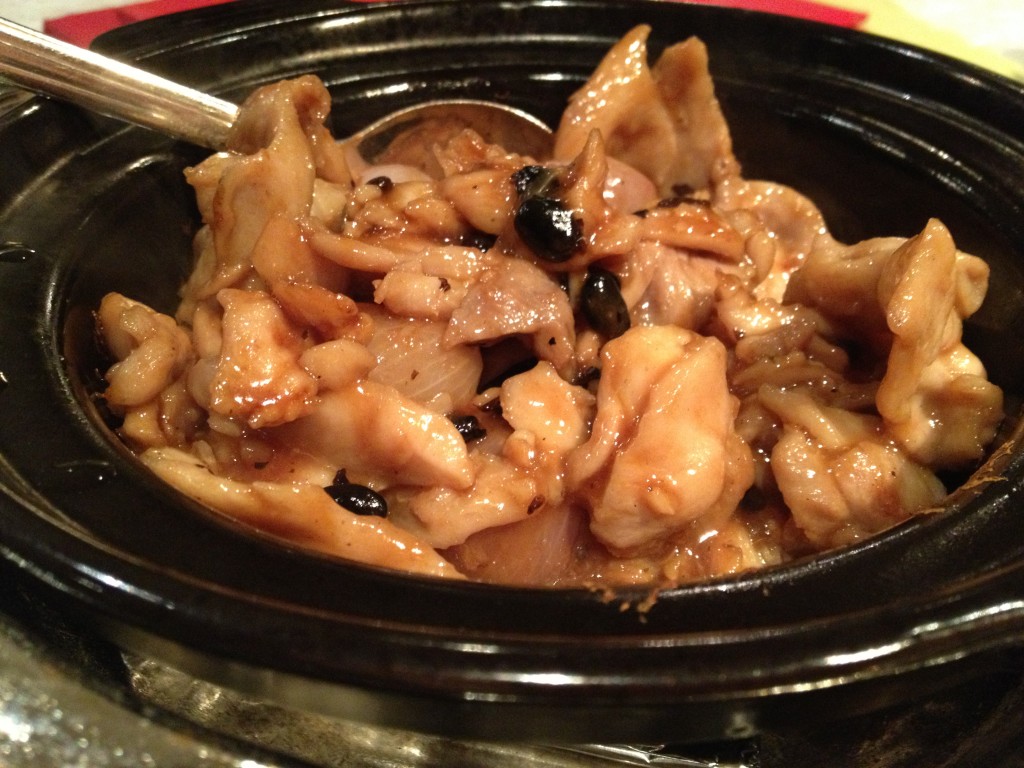 A narrow exception to the subtlety rule was the black bean chicken, which I ordered on a lark – it appears frequently on takeout menus in the west so I figured I’d try the “real thing.” Wow.
A narrow exception to the subtlety rule was the black bean chicken, which I ordered on a lark – it appears frequently on takeout menus in the west so I figured I’d try the “real thing.” Wow.
The wontons are not shredded shrimp, but rather chopped whole shrimp, barely “garnished” with shredded pork, a surprising combination of fishiness and savoriness I learned to love in the space of five minutes.
2. 永華麵家 Wing Wah Noodle Shop
89 Hennessy Road, Wan Chai, Hong Kong
+852 2527 7476
Wan Chai Station on Blue Line, exit C is closest without crossing the street.
My wife’s ability to read Chinese afforded us access to an inside source: Open Rice, the Yelp of Hong Kong. It was here, searching for the famous “bamboo noodles”, featured on No Reservations, that we found Wing Wah. It’s appropriate that Wing Wah be the second stop for any first-time traveler to Hong Kong because it’s a foil to Hoi King Heen in several ways. It’s proletarian, whereas HKH is banquet fare. It’s on the Island, off a busy street, whereas HKH is in the basement of a hotel in a neighborhood (Jianshazui) famous for its duty-free stores and busloads of bargain-hunters. What’s more, beef shank noodles and wonton soup are item number two on the “visit Hong Kong before I die” bucket list.
The phrase “bamboo noodle” describes a traditional way of making noodles – one best left to video to explain. (Leave a comment if the link is broken. Why the Travel Channel doesn’t just put all the old Tony episodes up in high resolution on its Youtube channel and use them as vehicles to promote their new shows is beyond me. Old media thinking…) I don’t pretend to understand the extent that this method is still in use – most western guides are limited by the language barrier to relaying the opinions of single fixers or translators – but the consensus on Open Rice and other local sources is it’s a declining art. Put simply, this is the most authentic version of a takeout classic you’re likely to find.
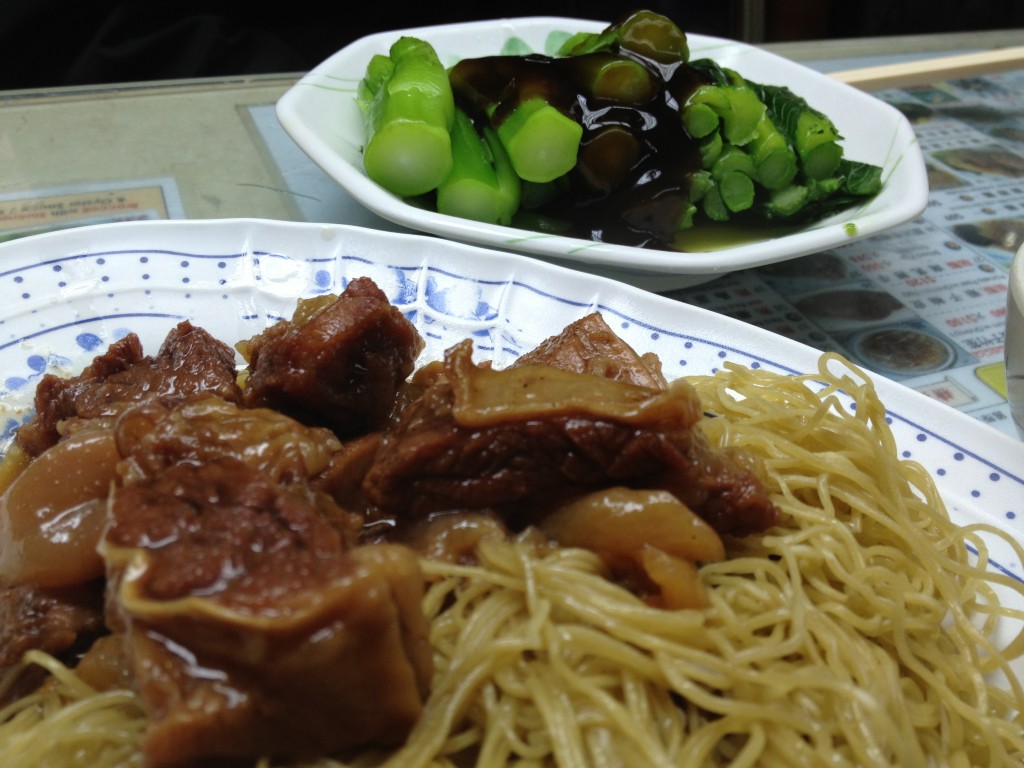 What’s different? The noodles are thin, dense, and dry. The difference between these and those of New Win Shing in Astoria Queens (repreSENT) is like the difference between a decent $5 bottle of wine and a truly excellent collector’s bottle in its prime. Something happens when you kneed dough for hours with a bamboo pole, doubling-it-over then re-kneeding it. You can feel the density between your teeth.
What’s different? The noodles are thin, dense, and dry. The difference between these and those of New Win Shing in Astoria Queens (repreSENT) is like the difference between a decent $5 bottle of wine and a truly excellent collector’s bottle in its prime. Something happens when you kneed dough for hours with a bamboo pole, doubling-it-over then re-kneeding it. You can feel the density between your teeth.
Not to mention the beef is basically the Platonic form of stewed beef shank. Unlike its counterpart in Taiwan, they don’t shy away from fat here – either in broth or attached to the meat – and it’s wonderful.
The wontons, which I’ll relate back to two of Taiwan’s best examples, are generous on the shrimp. It’s not shredded shrimp, but rather chopped whole shrimp, barely “garnished” with shredded pork, a surprising combination of fishiness and savoriness that took me aback, but which I learned to love in the space of five minutes. (They were good enough to cause Chih-Yu to question her allegiance to the Taiwanese version.)
The “heard it here first” revelation is that the superior of the two most famous locations for the most famous Taiwanese restaurant in the world, is the Hong Kong one.
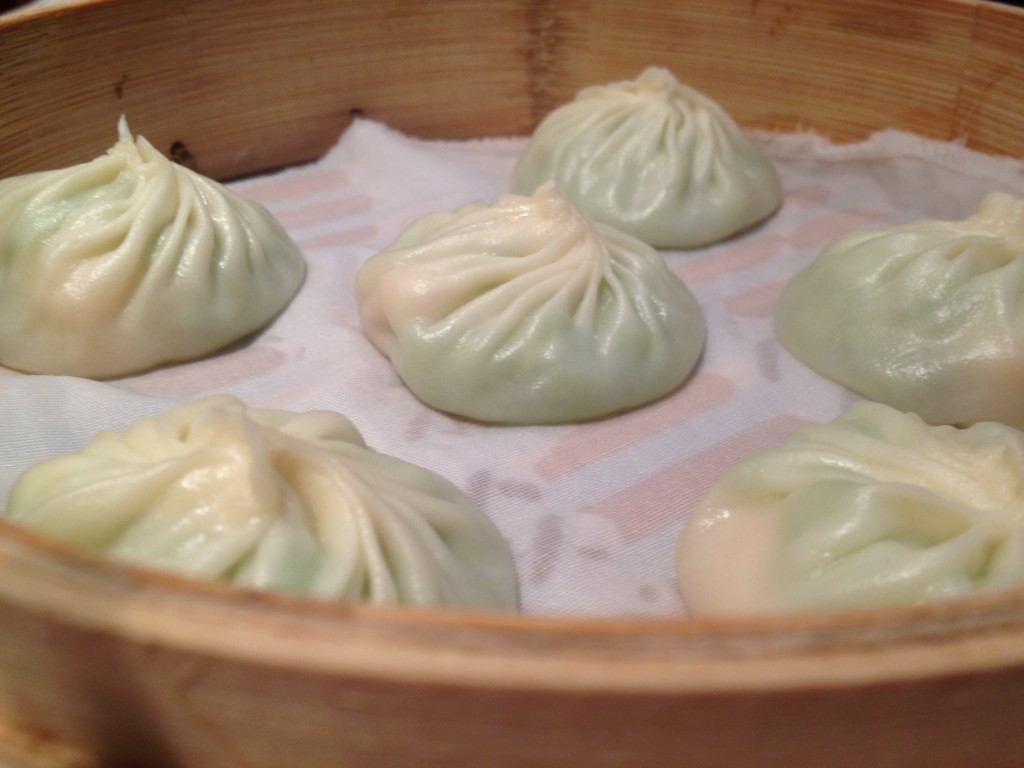
Xiaolongbao – the Shanghainese classic that put Yang Bingyi, and his restaurant Din Tai Fung, on the map.
3. Din Tai Fung
20 Canton Rd (Silvercord Shopping Center, 3rd Floor)
Hong Kong
+852 2730 6928
Tsim Sha Tsui Station on the Red Line, exit A1
Din Tai Fung is, quite simply, one of the best restaurants in the world. We review two locations – the original at Xinyi Road in Taipei, and the winner of the Michelin Star, the Canton Road location you’re presently reading about – in far greater detail in another article. The “heard it here first” revelation is that the superior of the two most famous locations for the most famous Taiwanese restaurant in the world, is this one. Doors open at 10:30. Come early so you get a seat.
That concludes the first half of the article.
The three restaurants above are world-class, and – in aggregate with the views/experiences/cultural immersion – reason enough to book a ticket. The following three are great as well, and fall into the “honorable mention” category. You wouldn’t travel halfway around the world for them, but they’re exceptional, especially in-a-pinch.
The Market
Level 2, Hotel Icon, 17 Science Museum Road
Tsim Sha Tsui East, Hong Kong
(Exit P1 or P2 from the metro station of the same name)
There’s little reason to relegate The Market to the back-end of this article. After all, it enjoys a nearly unanimous five-star rating on both Open Rice and Trip Advisor. The only reason The Market, situated on the second floor of the incomparable Hotel Icon, didn’t make the Top Three is you probably wouldn’t book a flight just to visit a hotel buffet.
That said, as I mention in the Icon review, this is not a buffet in any sense you’re used to if you haven’t been to Asia before. In Hong Kong, some of the best restaurants are in hotels – unthinkable in the West, where the closest approximation is the adjacency of New York’s Per Se to the Mandarin Oriental – and some of them – no, really – are buffets.
The Market does a decent job representing dim sum and congee, Hong Kong’s two most famous breakfast exports, but it also offers table-after-table of restaurant-level cuisine from around the world. England and Ireland, of course, but also France and the Middle East.
The Market, because of its price point, falls into the “special occasion” category – for instance if you’re entertaining clients or family – but even if you’re not staying in the Icon (and you’d have to be insane – or have a couch-surfing hookup – not to), it’s worth a trip.
一粥麵 Super Super Congee and Noodles
Shop 12A, Kowloon Station Airport Express
1 Austin Road West, Tsim Sha Tsui
Kowloon Station on the Subway
Super Super, far from being unique, is emblematic of the ubiquity of good food here, and included for being an exceptional option for its convenience. Fresh off the Airport Express, not feeling much like queuing up for a cab or shuttle bus on an empty stomach, Chih-Yu and I chanced upon this gem, and gambled that it would be good. Our gamble paid off.
Super Super isn’t doing anything that anybody else isn’t – if you had only one chance to eat wontons or beef shank noodles, I’d send you to Wing Wah – but they’re serving up solid local favorites, in a convenient manner and setting. Oh, and it bears mentioning that this is better than any noodles you’ll find outside Hong Kong. We’ve looked.
Wonton soup was a standout, as were the dry beef shank noodles with daikon. They were the first meal we had in Asia this trip, and they were up to the task.
Aku Teppanyaki
66 Mody Road, Hong Kong (Tsim Sha Tsui)
Exits P1 and P2 at Tsim Sha Tsui East Station
I resisted for-a-while including a Japanese-themed restaurant in an article about Hong Kong, and finally relented simply because it was too good to ignore. Yes, it’s kitschy decor and theatrics (though more serious than its American cousin – no spatula acrobatics here). (No, I didn’t misuse an apostrophe – that’s a contraction – “it is kitschy decor…”.) Yes, there were blue Christmas trees. But boil it down, and it’s Hong-Kong-born chefs preparing things like salmon, beef, chicken, and fried rice, and doing it exceptionally. If anything, the on-the-spot teppanyaki experience helps a customer appreciate the difference between a good chef and himself.
Among the highlights were eggs soft-boiled in the shell, with liver and caviar, savory sauteed salmon, salt-and-pepper chicken, and some of the best fried rice I had in Asia. (Maokong is the other contender).
